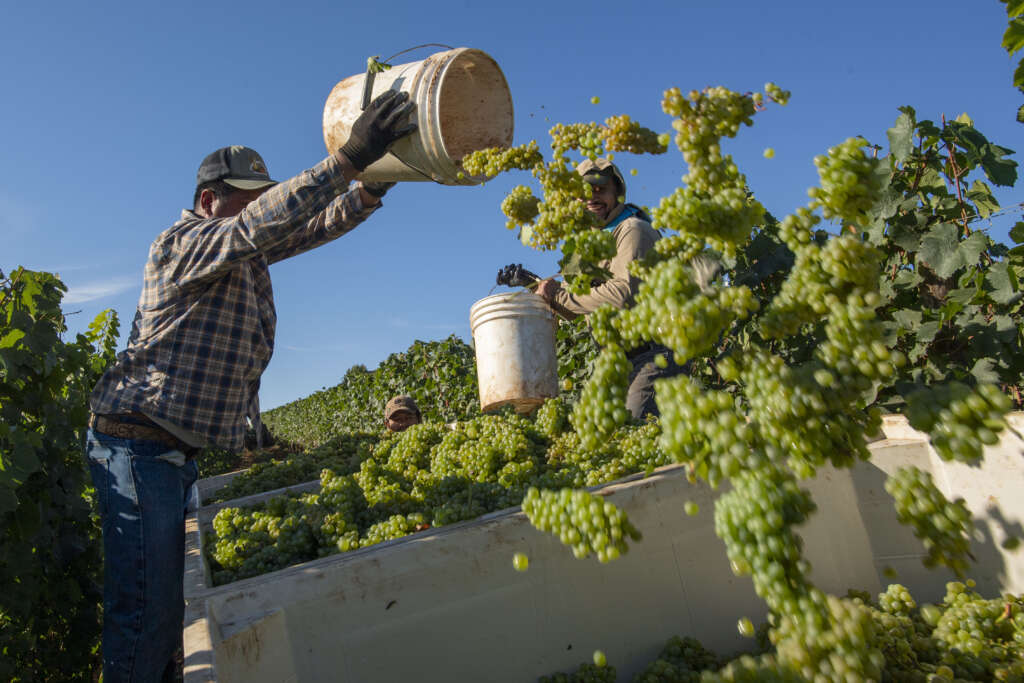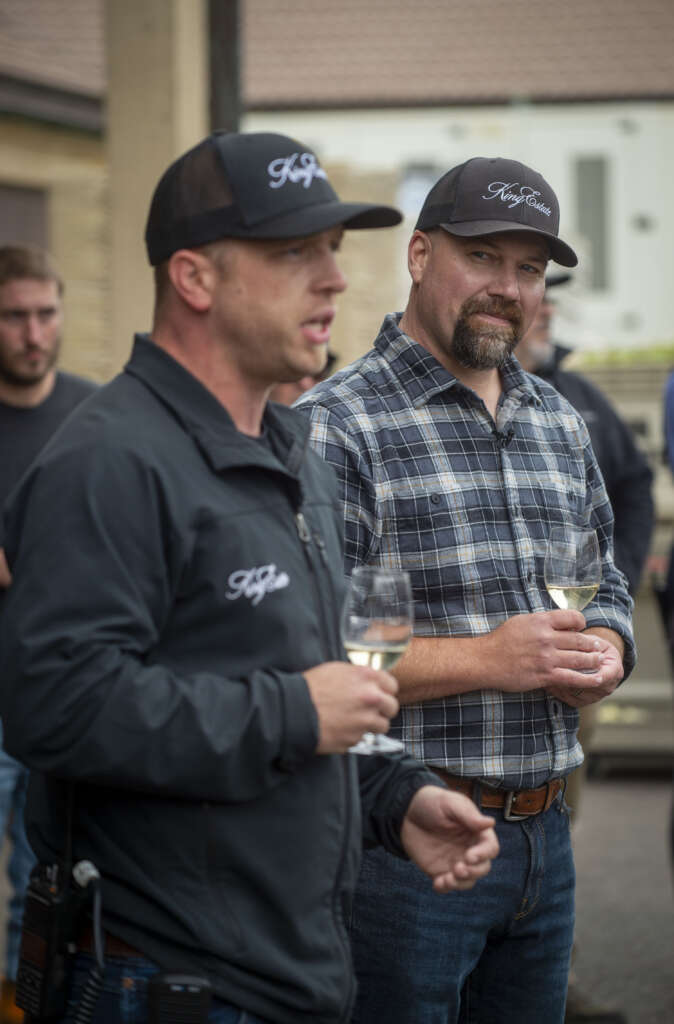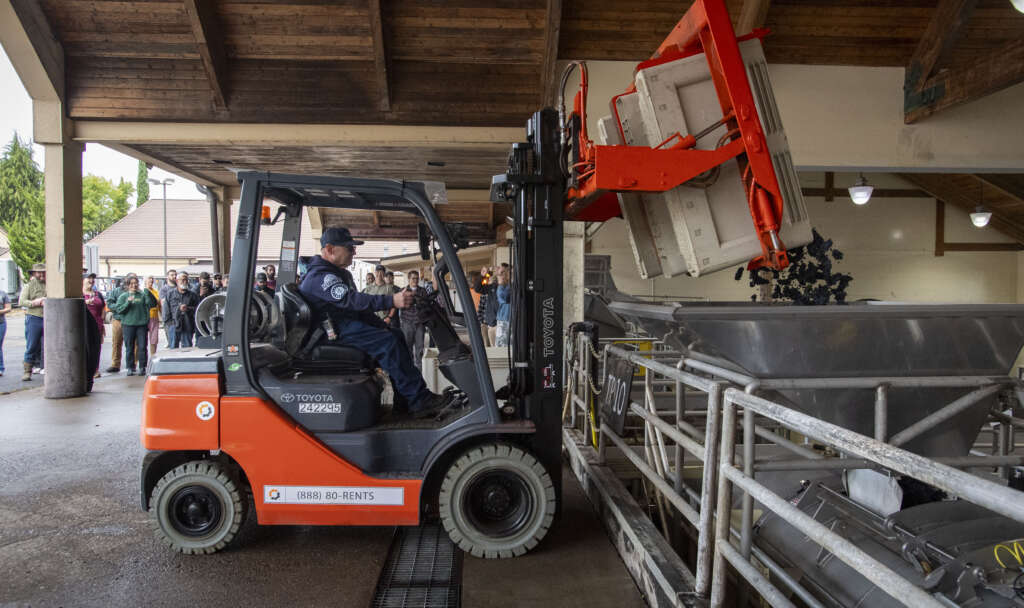Harvest at King Estate began on Sept. 12 when the first grapes were picked in Blocks 12F and J and Block 16: 21 tons of Pinot Noir and Chardonnay destined for the sparkling wine program. This is the first time in memory that the first fruit in was from our own estate.

After the fruit was picked it was refrigerated overnight for processing on Wednesday, Sept. 13. That fruit was quickly followed the same day by Muscat from Elhanan Vineyard, with Muscat and Pinot Gris in from King Estate’s Pfeiffer Vineyard the next day.
COO/Winemaker Brent Stone and Cellar Master Nick Fulks kicked off the harvest with a toast, remarks and the ceremonial dousing of the grapes.

Brian Weiler, Cellar Hand III, a 16-year harvest veteran, dumped the first tote of grapes in the hopper in honor of his long tenure with King Estate.

Getting Ready for Harvest
The kickoff of harvest is the culmination of a year’s worth of planning. From the moment the last harvest concludes, planning for the next one begins as the cycle of harvest, fermentation, blending and bottling marks a year in the life of the estate. “It’s the biggest planning exercise you’ll ever undertake just because the harvest window is so small,” Brent says. “Any hiccup can become a huge issue. You have to account for every variable.”
Guiding the King Estate winemaking and production teams is a 50+-page harvest plan that is meticulously prepared over the course of the year and then reviewed and updated right up until the moment harvest begins. The plan covers all aspects of the winemaking process and all the ways things could go awry.

Setting Targets and Staffing Up!
The first step is to establish targets for the volume of grapes we need from our own estate and our vineyard partners. From there we proceed to ordering supplies and hiring. Our cellar crew will increase almost 50% as we move from four 10-hour days to a 24/7 operation. Over about a six-week period, this hardworking crew will process about 4,000 tons of fruit. That’s 200 to 250 tons a day, if the fruit arrives in an orderly fashion and on our schedule, which of course it doesn’t. It can be as little as zero (if it’s raining) to more than 400 tons a day.
As harvest nears, all the equipment and machinery used in the winery and vineyard is fired up and tested. “Everything has to be working well,” Brent says. “It will test your team’s organizational skills more than any operation I am aware of.
“The name of the game is planning.”
